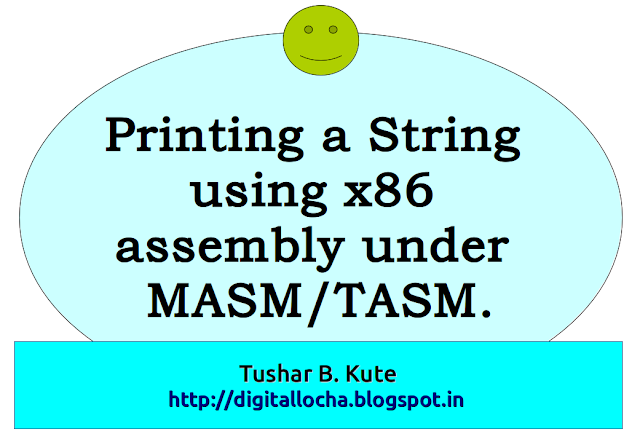In
many assembly language programs written for x86 architecture, the
values 10, 13 are written in data segment declaration.
e.g.
.data
message
db 10, 13, 'abcd$'
Here
the string will be declared and it will have the values declared in
front of it. The actual array will be,
message:
|
0AH
|
0DH
|
41H
|
42H
|
43H
|
44H
|
24H
|
10
13 'a' 'b' 'c' 'd' '$'
The
respective ASCII characters of these values will be printed till '$'.
It is considered as end of the string character. 'a' 'b' 'c' 'd' are
printable characters but 10 & 13 are non-printable characters .
In
short,they are control characters chart below.(Reference -Wikipedia).
10
is called as LF or Line Feed or new line and 13 is called as CR or
Carriage return.
These
character are used to control the cursor position. The 10 shifts
cursor on new line with same column no. and 13 returns the cursor to
its initial position of line that is at start of the line!
So,
every time you make use of these control characters as the part of
string or any array. It shifts the cursor to new line and at the
start of the line.
(Note
– the term carriage return (CR) is taken from printer's operation.
When printer finishes one line printing, it shifts to new line but it
prints head moves to start of new line).
LF
& CR are equivalent to \n & \r used is print statement of high
level programming languages.
Lets
take an Example.
Declare
variable as
.data
message
db 10,13,'Welcome$'
and
print using,
MOV
AH, 09H
LEA
DX, MESSAGE
INT
21H
Now
make some changes in declaration as,
.data
message
db 10, 13, 'Wel', 10, 13, 'come$'
Check
the output by printing this message.








